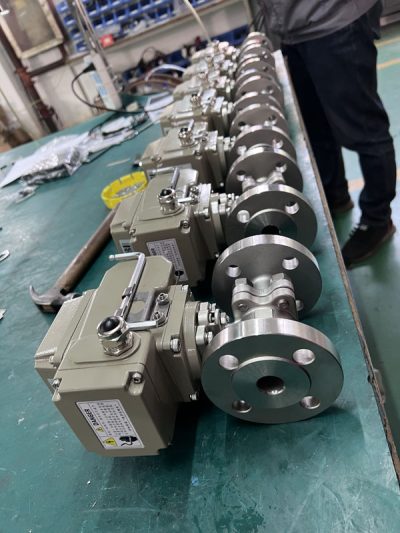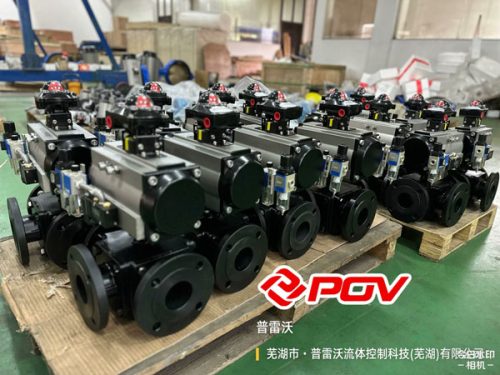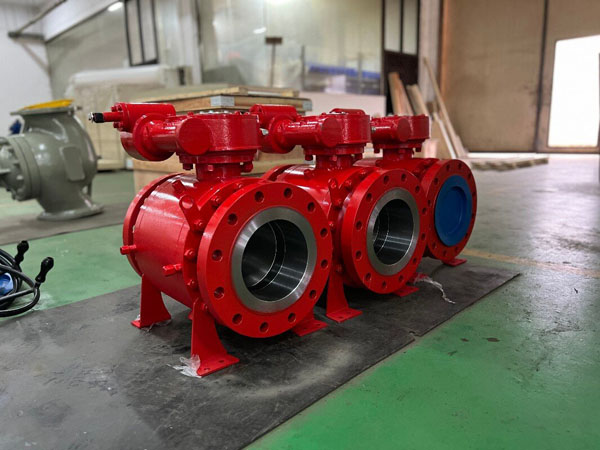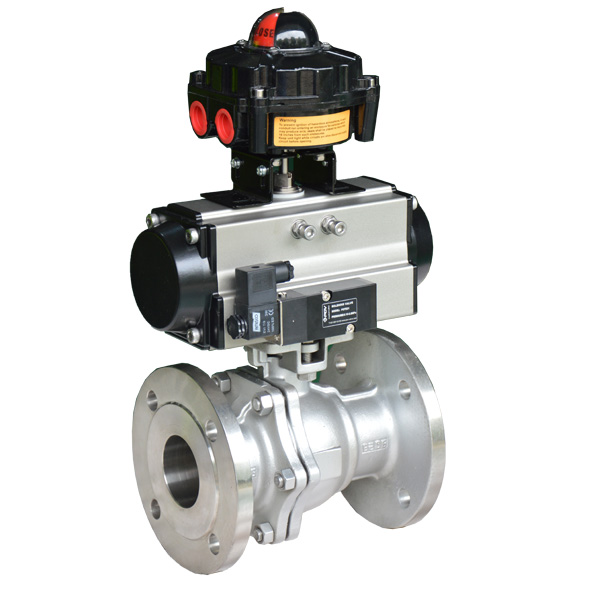Selecting the right valve for your system starts with understanding ANSI pressure ratings. Among the most prominent classifications, ANSI 150 is a trusted standard for moderate-pressure applications. Whether you’re working with a ball valve, gate valve, or butterfly valve, or more specialized options such as pneumatic, electric, or flanged ball valves, knowing these ratings ensures efficient and safe system performance. A proper grasp of ANSI 150 and 300 classes is essential for making informed, reliable valve choices.
Introduction to ANSI Pressure Ratings
ANSI pressure ratings serve as a critical framework for ensuring valve performance and safety under specific pressure levels. These standards are essential when selecting equipment like a pneumatic ball valve, 3 way ball valve, or electric ball valve, as they define the pressure tolerances for each application. For more demanding systems, options like a globe valve or a pneumatic control valve offer enhanced compatibility with higher-rated classes. By understanding these ratings, operators can confidently align their valve choices with system requirements for optimal reliability.
What Does “ANSI 150” Mean?
Explanation of ANSI 150 pressure ratings and their significance.
ANSI 150 refers to a specific pressure class outlined by the American National Standards Institute (ANSI) and is widely utilized across various industries. This designation indicates that the valve, flange, or piping rated as ANSI 150 can withstand a maximum pressure of approximately 285 psi at ambient temperatures, with pressure limits decreasing as the temperature rises. This versatility makes ANSI 150 an ideal choice for moderate-pressure applications, ensuring cost-effective performance without overengineering. Valves such as ball valves, gate valves, and globe valves often align with these specifications, making them reliable components in applications like water distribution, HVAC systems, and chemical processing. By adhering to ANSI 150 standards, operators can ensure both system efficiency and safety, minimizing risks while optimizing operational performance.
Common applications for flanged ball valves, pneumatic valves, and electric valves rated as ANSI 150.
Flanged ball valves, pneumatic valves, and electric valves rated as ANSI 150 are commonly utilized in industries that require moderate-pressure operation combined with reliability and efficiency. Flanged ball valves, for instance, are widely employed in water and wastewater management due to their secure sealing and ease of maintenance. Pneumatic valves are a staple in systems like compressed air distribution or industrial automation, where precise control and quick response are needed under ANSI 150 conditions. Similarly, electric valves excel in applications such as HVAC systems and chemical processing, offering automated operation with consistent performance. The ANSI 150 rating ensures these valves can handle typical pressure requirements safely while maintaining system efficiency, making them versatile options for a broad range of applications.

Exploring ANSI Class 300 Pressure Rating
Technical specifications and benefits of Class 300 ratings.
Class 300 pressure ratings represent a higher performance standard compared to Class 150, offering enhanced pressure and temperature tolerances to suit more demanding industrial applications. Components rated as Class 300 can typically withstand pressures up to 740 psi at ambient temperatures, with pressure capacity decreasing as temperatures rise. This increased resilience makes them suitable for applications involving steam, oil, and high-pressure water systems. Typical uses include power plants, petrochemical facilities, and industrial manufacturing that require robust and durable components. The benefits of Class 300-rated valves, such as stronger construction and higher safety margins, ensure long-term reliability and efficiency in critical systems, allowing operators to meet stringent operational criteria without compromising system performance.
Comparison of ANSI 150 vs. Class 300 for different systems, including globe valves and pneumatic control valves.
When comparing ANSI 150 and Class 300 pressure ratings, the key differences lie in their pressure and temperature tolerances, which directly affect their applications. Globe valves and pneumatic control valves rated as ANSI 150 are suited for moderate-pressure systems such as water distribution and HVAC, where operating conditions remain stable and do not demand excessive pressure resilience. Conversely, Class 300 components, including globe valves and pneumatic control valves, are engineered for higher-performance systems like steam plants or oil refineries, where pressures can reach up to 740 psi at ambient temperatures. This added capacity makes Class 300 a preferred choice for critical applications with rigorous operational demands. Selecting between ANSI 150 and Class 300 hinges on system requirements, ensuring optimal performance, safety, and cost-efficiency tailored to the specific use case.
Valve Selection Considerations for ANSI 150 and 300 Classes
Factors to consider, such as system pressure, temperature, and compatibility.
When selecting valves for ANSI 150 and 300 classes, factors like system pressure, temperature, and compatibility are paramount to ensuring optimal performance and safety. ANSI 150-rated valves, with moderate pressure and temperature tolerances, are ideal for systems such as water services and HVAC, where operating conditions are stable and do not exceed 285 psi at ambient temperatures. On the other hand, ANSI 300 valves, designed for higher pressures and temperatures, are well-suited for industries like petrochemicals or power generation, where demands can reach pressures up to 740 psi. Compatibility with system media and piping is equally critical, ensuring materials and connections align with operational requirements to prevent wear or failure. Carefully evaluating these factors helps operators make informed decisions, achieving reliable, efficient, and cost-effective system functionality.
How valves like pneumatic ball valves, electric ball valves, and 3-way ball valves align with ANSI 150 and 300 requirements.
Valves such as pneumatic ball valves, electric ball valves, and 3-way ball valves are well-suited to meet the distinct requirements of both ANSI 150 and 300 classes, thanks to their versatile designs and material options. ANSI 150-rated valves are ideal for moderate-pressure applications, including water distribution, HVAC, and general industrial processes, where operating pressures and temperatures fall within the standard’s tolerances. Conversely, ANSI 300-rated valves provide the additional durability needed for high-pressure systems such as steam applications, chemical processing, and oil refineries, withstanding pressures up to 740 psi at ambient temperatures. The adaptability of these valve types, particularly 3-way ball valves, allows seamless flow control and configuration in complex piping systems, while pneumatic and electric actuation options ensure precise and efficient operation. By matching valve capabilities to the pressure and temperature demands of each class, operators can achieve reliable performance and extended service life in their systems.

ANSI Pressure Ratings Across Industries
Industrial applications for ANSI 150 and 300 valves, such as in petrochemical, water treatment, and power plants.
ANSI 150 and 300 valves play a critical role across numerous industrial sectors, including petrochemical, water treatment, and power generation, by meeting diverse operational demands. ANSI 150-rated valves are well-suited for moderate-pressure environments, such as water treatment systems, where they ensure smooth and efficient flow regulation under stable operating conditions. For more demanding sectors, such as petrochemical plants and power generation facilities, ANSI 300 valves are indispensable. Engineered to handle higher pressures and temperatures, these valves provide the durability and reliability necessary for extreme applications like steam systems or chemical transport lines. Their ability to ensure system safety and operational efficiency makes them a trusted choice for maintaining productivity and adhering to stringent industry standards.
Examples where choosing the right ball valve, globe valve, or pneumatic control valve ensures safety and performance.
Selecting the right ball valve, globe valve, or pneumatic control valve is crucial for ensuring safety and performance in high-stakes industrial environments. For instance, in petrochemical facilities, a properly rated globe valve is essential for precise flow control in processes that involve hazardous and high-pressure chemicals, reducing the risk of leaks and ensuring regulatory compliance. Similarly, in power plants, high-performance ball valves with tight shut-off capabilities are indispensable for handling superheated steam, preventing system failures under extreme pressure and temperature conditions. Pneumatic control valves are vital in water treatment plants, where their ability to modulate flow accurately enhances system efficiency while avoiding overpressure situations that could compromise equipment. By carefully matching valve specifications to system requirements, operators can not only maintain optimal performance but also reinforce overall system safety and reliability.
Maintenance and Quality Control of ANSI Valves
Best practices for maintaining valves with ANSI pressure ratings.
Proper maintenance is crucial for ensuring the longevity and performance of valves with ANSI pressure ratings. Regular inspections are vital to identify potential issues like corrosion, leakage, or misalignment before they escalate into operational failures. Cleaning the valves to remove debris and buildup helps maintain unobstructed flow and prevents damage to internal components. Lubricating moving parts, especially in ball valves and pneumatic control valves, minimizes friction and enhances operational efficiency. Addressing wear and tear by promptly replacing damaged components, such as seals or seats, ensures the valve continues to meet performance and safety standards. Implementing a proactive maintenance schedule not only maximizes service life but also supports compliance with stringent industry regulations, safeguarding both equipment and processes.
Importance of certifications and quality checks for valves like flanged ball valves and electric ball valves.
Certifications and quality checks are fundamental to ensuring the performance, safety, and reliability of valves like flanged ball valves and electric ball valves. Certifications validate that these valves comply with stringent industry standards, such as ANSI pressure ratings, guaranteeing their suitability for specific operational demands. Regular quality checks, including pressure testing, material inspection, and functionality assessments, play a pivotal role in identifying potential defects or deviations from design specifications. For critical applications, these measures ensure that valves can withstand demanding pressures, temperatures, and environmental conditions without failure. By prioritizing thorough certification and quality control processes, operators can ensure long-term system efficiency, reduce downtime, and maintain adherence to regulatory and safety requirements.

FAQ ansi 150
1. What types of valves are suitable for ANSI 150 pressure ratings?
ANSI 150 pressure ratings are commonly compatible with a wide variety of valves, depending on the application. A flanged ball valve is often used for its robust sealing properties, while a gate valve is ideal for isolating flow in low-pressure systems. For precise control, a butterfly valve provides an efficient solution, particularly in systems requiring compact designs. Additionally, pneumatic valves and electric valves designed for ANSI 150 ensure smooth automation and reliable performance in industrial operations.
2. How do ANSI 150 and 300-rated valves differ in performance?
The primary distinction lies in their pressure and temperature capacities. For example, a ball valve with an ANSI 150 rating may be adequate for general liquid and gas applications, such as water or air systems, while an ANSI 300-rated flanged ball valve would handle higher pressures and more demanding environments, like steam or chemical systems. Similarly, ANSI 300 gate valves and butterfly valves excel in processes requiring enhanced durability and performance under elevated stress. Pneumatic valves and electric valves designed for these ratings ensure precise, adaptable control suited to the respective system requirements.
3. Why is it important to select the correct valve type and pressure rating for ANSI systems?
Selecting the right valve type and pressure rating ensures safety, efficiency, and longevity. For instance, a flanged ball valve rated for ANSI 150 may work well in moderate pressure applications but could fail in high-pressure systems where ANSI 300-rated components, such as gate valves or butterfly valves, are essential. Pneumatic valves and electric valves tailored to specific pressure ratings guarantee consistent performance and operational control. Proper selection minimizes risks like leaks, pressure surges, and mechanical failure, safeguarding both equipment and processes.
Conclusion ansi 150
Understanding ANSI pressure ratings, particularly for ANSI 150 and 300 classes, is essential for optimizing safety, efficiency, and overall system performance in industrial operations. Valves such as the pneumatic ball valve or the versatile 3 way ball valve provide precise control in complex systems, while the electric ball valve offers reliable, automated functionality for applications demanding minimal human intervention. The globe valve remains a key choice for throttling flow, and the pneumatic control valve excels in responding to pressure fluctuations with precision. By selecting the appropriate valve type and ensuring compliance with the correct ANSI pressure rating, operators can meet industry requirements, enhance operational longevity, and safeguard critical systems against potential failures.

